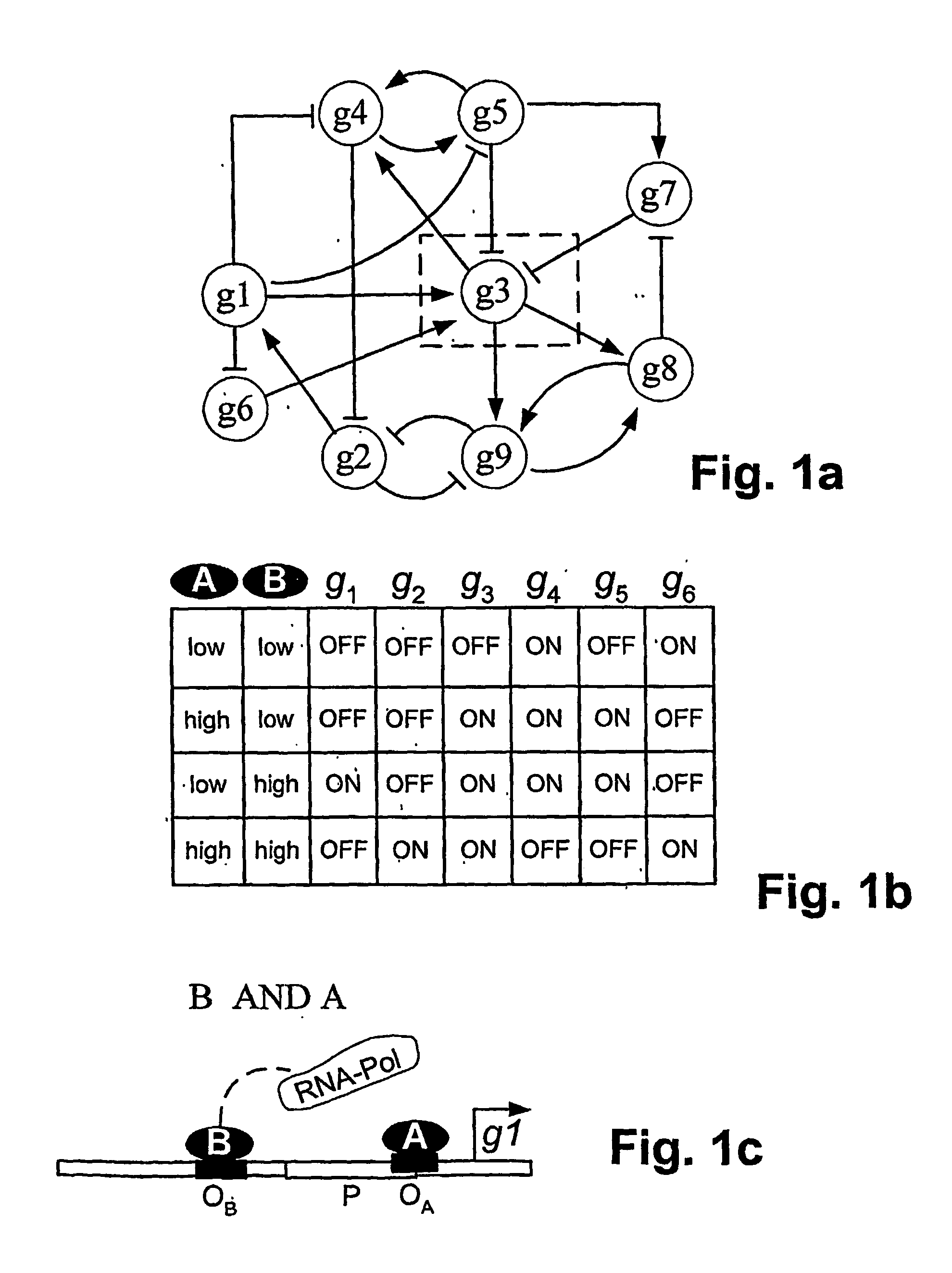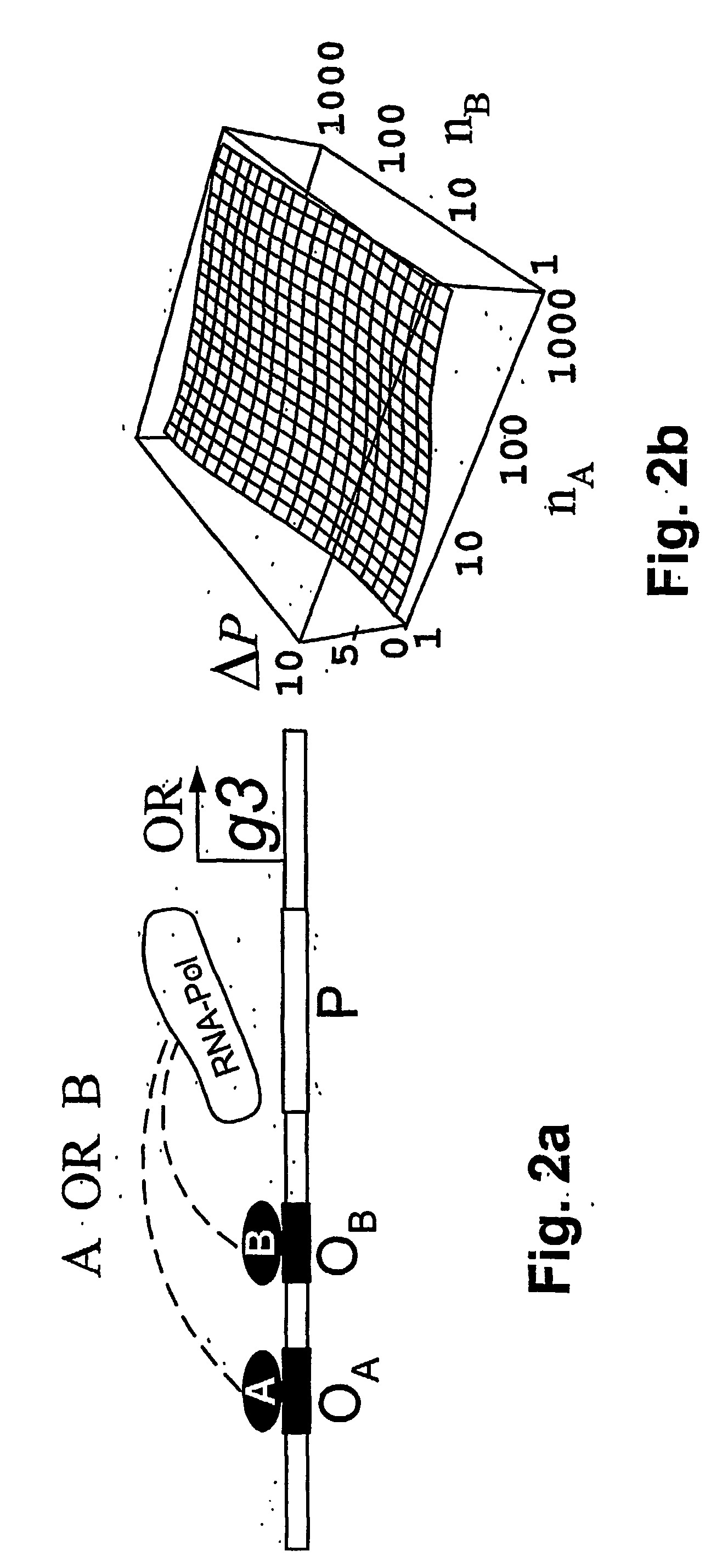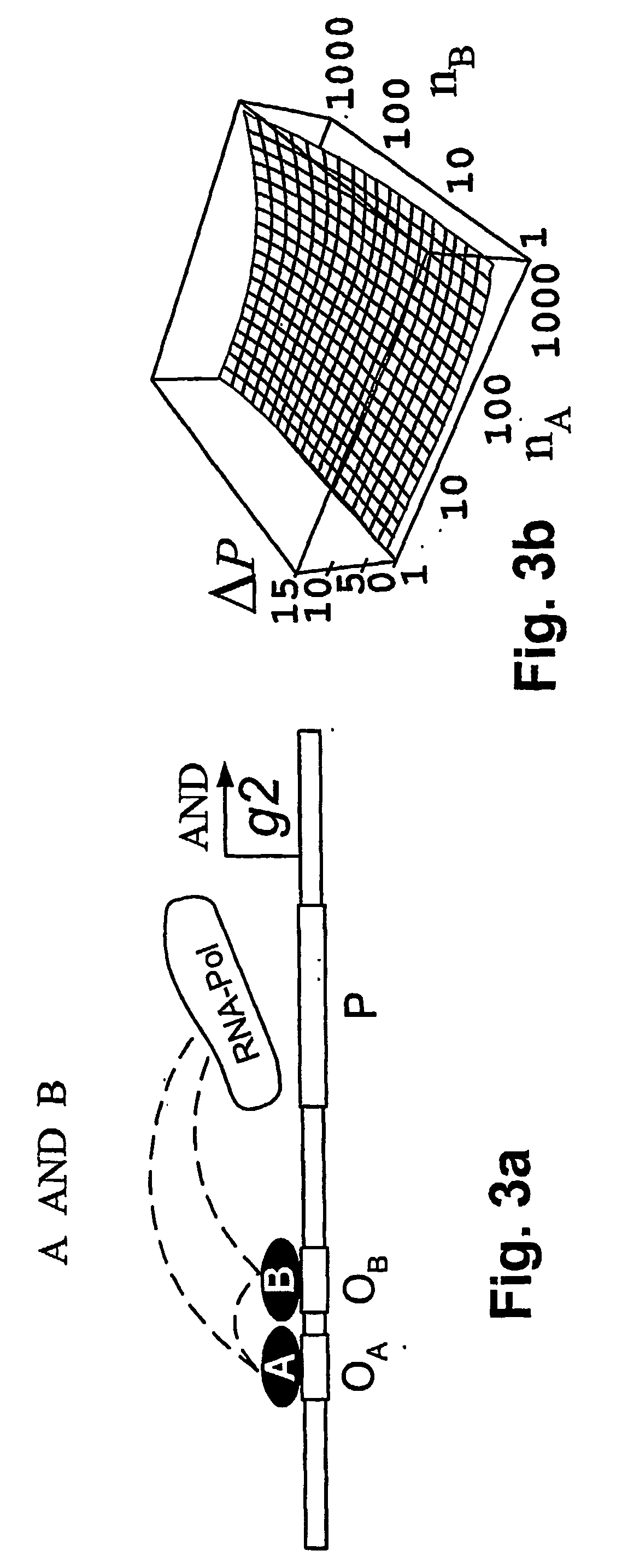Genetic computing using combinatorial transcription control
- Summary
- Abstract
- Description
- Claims
- Application Information
AI Technical Summary
Benefits of technology
Problems solved by technology
Method used
Image
Examples
Embodiment Construction
[0028] According to the present invention, a method and model are provided for the implementation of a wide class of cis-regulatory logics based only on selecting and juxtaposing binding sequences on the genomic DNA. Using an approach similar to that of Shea and Ackers (1985), the model is applied to cis-regulatory sequences that implement specified logic functions. The problem of increasingly complex logical functions can be largely overcome by incorporating a mechanism for long-distance repression, which is experimentally well documented in eukaryotes (Courey and Jia 2001).
[0029] Genetic networks are frequently represented graphically as shown in FIG. 1a. In the figure, the “wiring” of the network is indicated by lines connecting the genes, i.e., the “nodes” of the network, and arrows or bars at the end of lines denote a stimulating or inhibitory effect on gene expression, respectively. The activity of a node is regulated by other nodes through the concentrations of their gene pr...
PUM
| Property | Measurement | Unit |
|---|---|---|
| Strength | aaaaa | aaaaa |
| Distance | aaaaa | aaaaa |
| Interaction | aaaaa | aaaaa |
Abstract
Description
Claims
Application Information
 Login to View More
Login to View More - R&D Engineer
- R&D Manager
- IP Professional
- Industry Leading Data Capabilities
- Powerful AI technology
- Patent DNA Extraction
Browse by: Latest US Patents, China's latest patents, Technical Efficacy Thesaurus, Application Domain, Technology Topic, Popular Technical Reports.
© 2024 PatSnap. All rights reserved.Legal|Privacy policy|Modern Slavery Act Transparency Statement|Sitemap|About US| Contact US: help@patsnap.com










